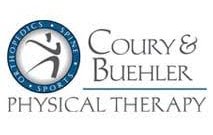No one likes to feel pain – it’s a sign that something is wrong with your body. But many people often avoid exercise or physical therapy because they’re afraid it will be painful. This can cause a dangerous cycle that will actually lead to more pain, rather than less, especially when the pain is chronic or recurring.
As the experts at Coury & Buehler Physical Therapy explain it, “pain leads to fear avoidance behavior.” Your natural reaction to pain is to figure out what to not do in order to not feel the pain. So, for example, you limp to put less pressure on a sprained ankle. But the limping can affect your posture and other joints, leading to more pain.

In addition, the pain causes stress and worry about more pain, and the stress and worry can increase your sensitivity to pain. Without treatment and activity, this leads to constant concern about pain and movement, which is no way to live.
If you’re experiencing chronic pain, whether on a daily basis or simply after your favorite activity, the most important thing to do is to talk to your physical therapist. Tell them your concerns, and what makes the pain worse.
PTs are musculoskeletal experts; you most certainly won’t be the first patient to come to them with chronic pain and fear of more pain. They can work with you to determine what is causing the pain, and ways to strengthen your body to reduce pain.

Don’t be surprised if your physical therapist tells you that you need to move more to overcome your chronic pain. For example, if you have joint pain from arthritis, increasing your activity can reduce pain. This is why the Mayo Clinic suggests more activity as one way to reduce pain – with the caveat that if you work with a PT, you’ll be more likely to find safe ways to increase activity while reducing pain.
Keep in mind that the other tips from the Mayo Clinic on pain management are related to reducing stress, which, as we note above, can increase your sensitivity to pain. Be aware of what stresses you out and try to minimize those triggers for anxiety. Also, try to get more sleep, as a lack of sleep makes everything more difficult during the day.
To talk to a physical therapist about reducing your pain and improving your health, use our locator below to find a Physiquality rehabilitation therapist near you today.
Thank you to our contributors:

Coury and Buehler Physical Therapy is a Physiquality member with seven locations in Orange County, California. Founded by Brandon Buehler and Rich Coury in 2004, they work to help every patient live a better, healthier life, relieving pain and improving function through treatment.
Physiquality.
- 7 fibs you’re telling yourself about not exercising. January 14, 2021.
- If you’re in pain, try physical therapy before relying on painkillers. April 9, 2018.
Nguyen, Christy. Fear avoidance and the pain cycle. Coury & Buehler Physical Therapy, July 26, 2018.
Lifestyle strategies for pain management. Mayo Clinic, October 28, 2017.
Gatchel RJ et al. Fear avoidance beliefs and chronic pain. Journal of Orthopedic Sports Physical Therapy, January 31, 2016.
Brody, Jane E. A good night’s sleep isn’t a luxury; it’s a necessity. New York Times, May 30, 2011.